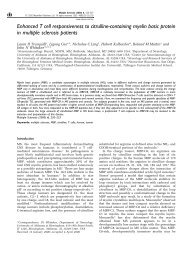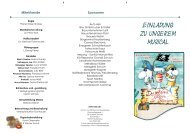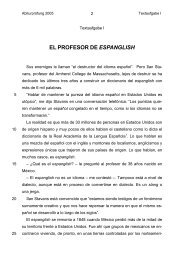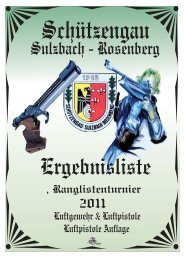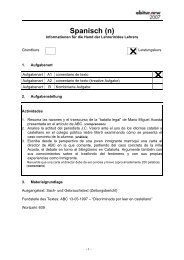Pathfinder Chronicles - Gazetteer - Asamnet
Pathfinder Chronicles - Gazetteer - Asamnet
Pathfinder Chronicles - Gazetteer - Asamnet
Create successful ePaper yourself
Turn your PDF publications into a flip-book with our unique Google optimized e-Paper software.
<strong>Pathfinder</strong> <strong>Chronicles</strong><br />
10<br />
Appearance: Most barbarians dress plainly, using<br />
materials harvested from hunts, be it fur, scales, or leather.<br />
Barbarians who hail from a tribe often carry some sort of<br />
token or talisman to mark their allegiance. While many<br />
tribes also use war paint before going into battle, those<br />
from less civilized groups wear it almost constantly.<br />
Barbarians from the jungles of Garund dress similarly to<br />
their northern counterparts but tend to practice tattoo arts<br />
far more frequently.<br />
Nations: In Avistan, barbarians most typically hail<br />
from the Lands of the Linnorm Kings, the Realm of<br />
the Mammoth Lords, the Worldwound, Numeria, and<br />
the Storval Plateau of Varisia. In Garund, barbarians<br />
are most commonly found in the Sodden Lands and the<br />
Mwangi Expanse.<br />
Class Abilities: Barbarians trained in the cold climates<br />
of the Lands of the Linnorm Kings, the Realm of the<br />
Mammoth Lords, and Sarkoris sometimes have the cold<br />
resistance ability, which replaces the trap sense ability.<br />
Cold Resistance (Ex): At 3rd level, a barbarian gains cold<br />
resistance 2. This resistance increases by 2 for every 3<br />
additional levels the barbarian attains, for a total of cold<br />
resistance 12 at 18th level.<br />
Bard<br />
From the royal dancers of Osirion to the savage skalds of<br />
Numeria, bards perform across the face of Golarion. While<br />
the common folk welcome them in almost any taproom,<br />
others view them as vagabonds and thieves (a reputation<br />
that some have no doubt earned). Able to ply their trade<br />
anywhere, these skilled performers have more freedom<br />
than most, but their lives are not without restrictions. The<br />
city of Absalom, for example, requires that any performer<br />
wishing to earn coin on a stage must be a part of the<br />
performer’s guild, leaving only the streets to<br />
those without such membership.<br />
Appearance: In the major cities of the Inner Sea, bards<br />
tend to wear colorful clothing so as to attract attention to<br />
their shows. In the world’s wilder regions, performers tend<br />
to dress as the common folk do, so as to better blend in<br />
if things go sour. Trained performers often wear badges<br />
or other signets to mark their tutelage, assuming their<br />
schools bear some renown. Some place this mark on their<br />
instruments instead.<br />
Nations: Nearly every nation across Golarion has bards<br />
of one sort or another. In the north, these tend to be warrior<br />
skalds, who sing the praise of their fellows before riding<br />
into battle. Along the Inner Sea, these performers tend to<br />
be trained in one of the great schools in Absalom, Oppara,<br />
or Westcrown. Many bards of the distant south take on<br />
the role of lore keeper, using song and dance to track<br />
the history of their people. Only the nation of Razmiran<br />
outlaws performers, preferring instead to preach the litany<br />
of its all-consuming faith.<br />
Class Abilities: Bards trained at one of the great schools of<br />
the Inner Sea tend to favor one instrument above all others,<br />
focusing their training. Such bards have the specialized<br />
training ability, which replaces bardic knowledge.<br />
Specialized Training (Ex): At 1st level, a bard must choose<br />
a single category of the Perform skill. Whenever the bard<br />
performs bardic music using the chosen category of the<br />
Perform skill, he is treated as being 2 levels higher when<br />
determining the effect and save DC. In addition, a bard<br />
with specialized training can make use of his bardic music<br />
one additional time per day, assuming that the additional<br />
usage uses his chosen category of the Perform skill.<br />
Cleric<br />
With the exception of the godless folk of Rahadoum,<br />
religion plays an important role in the lives of most of<br />
Golarion’s people. As a result, clerics devoted to good and<br />
neutral gods are held in high regard in most communities.<br />
Keleshite<br />
Casmaron’s interior east of Taldor is a place of sprawling deserts and fantastic climes, a bewildering<br />
world of eroded civilizations inhabiting even more eroded cities of broken monuments<br />
and toppled stone. Just as Taldor and later Cheliax were great in the West, so was the Padishah<br />
Empire of Kelesh great in the East—and remains so today. The westernmost Keleshite outpost<br />
is Qadira on the Inner Sea, and from this post the entire civilization launched aggressive designs<br />
upon both Avistan and Garund. These treacheries caused great wars and upheavals in<br />
the past, but the region is currently in the thrall of a century-long period of grudging trade<br />
and cooperation.<br />
Beyond Qadira, Keleshites are common in Absalom, Katapesh, Osirion, and Nex.<br />
They pride themselves on horsemanship, hospitality, and music. Both women and<br />
men wear their uniformly black hair long, with lengthy beards common in adult<br />
males. Most Keleshites encountered in the Inner Sea region speak Kelish.




